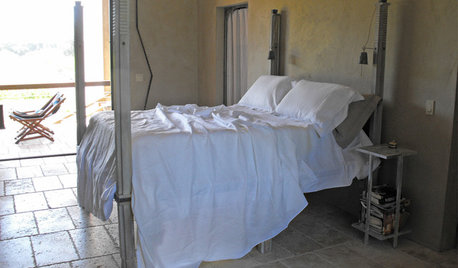'If I could do it all over again, I would definitely ....'
veggieman4
17 years ago
Related Stories

PRODUCT PICKSGuest Picks: If I Could Have a Dorm Room Do-Over
One interior decorator reimagines the drab dorm room into a stylish, fun space to study and sleep
Full Story
LIFEHow to Fall Head Over Heels for Your Partner Again
Bring back that loving feeling this Valentine’s Day, and you just might live happily ever after
Full Story
LIFELate Again? Eliminate the Things Holding You Up in the Morning
If you find yourself constantly running late for appointments, work and get-togethers, these tips could help
Full Story
PRODUCT PICKSGuest Picks: What’s Purple All Over?
With kitchen appliances, pillows, chairs and more in shades of lavender to plum, your home can be as purple as you please
Full Story
DECORATING GUIDESRoom of the Day: Black, White and Red All Over
Custom fabric, heirlooms, bold color and a beloved collection of books cozy up this farmhouse library
Full Story
FALL AND THANKSGIVINGIt's Black and White and Fall All Over in a Holiday-Happy Home
Get inspired for budget-friendly fall decorating by a resourceful stylist's thrifty but sophisticated adornments
Full Story
HOLIDAYSCelebrating Kwanzaa: Honor African Heritage All Over the Home
Bring the spirit of this weeklong celebration home by embracing its traditions and decorating with African-inspired pieces
Full Story
PRODUCT PICKSGuest Picks: Loving Linen All Over the Home
Charmingly rumpled or ironed smooth, these linen finds from napkins to curtains bring casual elegance to rooms
Full Story
DECORATING GUIDESHouzz Call: What Home Collections Help You Feel Like a Kid Again?
Whether candy dispensers bring back sweet memories or toys take you back to childhood, we'd like to see your youthful collections
Full Story
FUN HOUZZEverything I Need to Know About Decorating I Learned from Downton Abbey
Mind your manors with these 10 decorating tips from the PBS series, returning on January 5
Full Story




marymd7
billme
Related Discussions
Should I start all over again?
Q
If I could do it all over again...
Q
I'm lazy, so lazy all I could do was not try
Q
If you could start all over again
Q
althea_gw
Heathen1
katj75
veggieman4Original Author
byron
habitat_gardener
trancegemini_wa
pablo_nh
pablo_nh
byron
tom_in_nh
pickwick
pickwick
pnbrown
pickwick
paulns
pnbrown
cantstopgardening
paulns
habitat_gardener